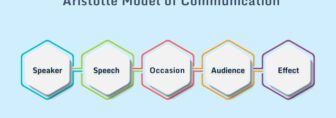7 Best Process Improvement Methodologies For Businesses In 2023

Every entrepreneur looks for new ways to improve, streamline, and optimize their business processes. If you think your business is making more production costs without getting a profitable ROI (return on investment), then you must implement the best process improvement methodologies.
If you wish to learn what these methodologies are and the best ones to implement in your business, read this post till the end. Here, you will learn about seven different methodologies for improving production processes.
Best Process Improvement Methodologies In 2023
If you wish to know what is process improvement methodology and how it helps businesses, you must learn about the most commonly implemented process improvement methodologies. The best process improvement techniques are:
1. Six Sigma (DMAIC)

The six sigma method is one of the most commonly used business process improvement methodologies. This methodology was developed in 1986 by Bill Smith, an employee of Motorola. The process is mostly used in manufacturing companies, where process managers use statistical data to optimize the process and reduce inconsistencies and increase customer satisfaction.
However, there are two variants of the six sigma process – DMAIC (for improving existing processes) and DMADV (for new processes). Since we are discussing process improvement methodologies, DMAIC stands for:
- Define – improvement opportunities.
- Measure – performance of all existing processes.
- Analyze – existing processes to find defects.
- Improve – negate analyzed defects.
- Control – ensure the defects do not get repeated in future processes.
2. Kaizen

The Kaizen methodology is one of the most useful process improvement methodologies for continuously improving the process by removing waste. This Japanese concept of improving production processes involves removing wasteful actions to continuously improve and optimize production processes.
In this process improvement framework, three types of wasteful practices must be eliminated to fix a time management matrix. The three types of waste here are:
- Muda (Wastefulness): This refers to business and production practices that use up resources without adding any value.
- Mura (Unevenness): This refers to the habit of overproducing that leaves behind surplus produce (considered as waste).
- Muri (Overburden): This refers to adding excess strain on the production process, like older machinery and overworked employees.
3. Lean Manufacturing

Lean Manufacturing is one of the most common manufacturing process improvement methodologies. This process was created by James Womack, Daniel Roos, and Daniel Jones. This process was primarily used to improve the manufacturing process of Toyota. It was later published in the book The Machine That Changed The World.
Lean manufacturing follows five core principles, which can be implemented with process automation software. These five core principles are:
- Identity Value – from the perspective of the customer, so that the products provide the maximum value as per customer demand.
- Value Stream Mapping (VSM) – means charting out the entire production requirements, like materials required for production from start to finish.
- Create Flow – to prevent interruptions in the production process to optimize the production process and reduce costs and time.
- Establish Pull -to identify demand for the product in the market and start production when demand rises.
- Continuous Improvement – of the production cycle by using the Kaizen process improvement method.
4. Lean Six Sigma

The Lean Sixma Model is one of the most advanced process improvement methodologies that many modern businesses apply. This methodology combines the best practices of the Six Sigma model, the Kaizen methodology, and Lean Manufacturing.
Here, similar to the Kaizen process, various wasteful practices must be negated. It’s extensively used in the bottled and jarred packaged goods industry. These can be compiled in the mnemonic “downtome” since it includes:
- Defects: Find issues with defective products (like wrong assembling or damage during production) and their production processes.
- Overproduction: This refers to a reduction of the excess of products produced, which will largely remain unsold and get scrapped.
- Waiting: This waste refers to eliminating time spent waiting for raw materials and time spent in manufacturing.
- Non-Used Talent: All employees involved in the production process should be used to the best of their skills, reducing idling.
- Transportation: Reducing the unnecessary movement of materials, produce, employees, and equipment to streamline the production process.
- Inventory: This refers to the removal of excess materials and equipment required in production.
- Motion: Here, this method aims at the unnecessary movement of employees to make processes more streamlined and employees more productive.
- Extra-Processing: This aims at streamlining and optimizing the production process so that no extra work is done.
5. PDCA Cycle

The PDCA Cycle is one of the most interactive process improvement methodologies for solving shortcomings in business processes. Walter Shewhart created this methodology which Edwards Deming later improved. This process is focused on economic quality control of all business processes.
- PDCA in the best paying jobs in capital goods stands for:
- Plan – ways to solve a particular issue.
- Do – implement and test out the plan on a smaller scale.
- Check – how well the plan performs in solving the problem in the previous “Do” step.
- Act – on implementing the plan if it performs well in the entire process. If it doesn’t, you can create a new plan or make adjustments and again go back to the “Plan” stage.
6. Total Quality Management (TQM)

TQM differs from other process improvement methodologies since it improves the production process by focusing on customers. This is a continuous improvement methodology mostly used in customer satisfaction projects and supply chain management.
This methodology is highly driven by the use of statistical data and various performance metrics. Some of its primary features are:
- Focus on customers: The focus of TQM has always been on benefitting the customer. Therefore, it is more focused on increasing product quality and value provided to customers.
- Complete-team involvement: TQM focuses on utilizing all members of all teams, which includes non-production teams like sales and marketing teams in the mix.
- Continuous improvement: Since TQM is a continuous process, it affects decision-making across all levels, which also gets done more frequently.
- Data-driven decision-making: Since the decision-making process is continuous, data regarding production and related metrics must be collected and analyzed constantly.
7. Business Process Management (BPM)

Business Process Management is one of the production process improvement methodologies used to develop and grow businesses. This method is useful for tracking production bottlenecks and removing them to improve the production process.
This method follows five steps, which are:
- Analyze – your current production process and identify inefficiencies.
- Model – a plan to remove aforementioned inefficiencies and make the ideal production process.
- Implement – the aforementioned plan.
- Monitor – the implementation of the aforementioned plan.
- Optimize – the implemented plan by further removing remaining and new inefficiencies.
Conclusion: It’s Time To Improve
All of the seven aforementioned process improvement methodologies are useful to optimize your production cycle. Implementing these production reforms will allow you to reduce production costs and get a higher ROI, revenues, and profits on sales.
If you need help understanding these methods in detail, reach out to me in the comment section below!
More Resources:

























